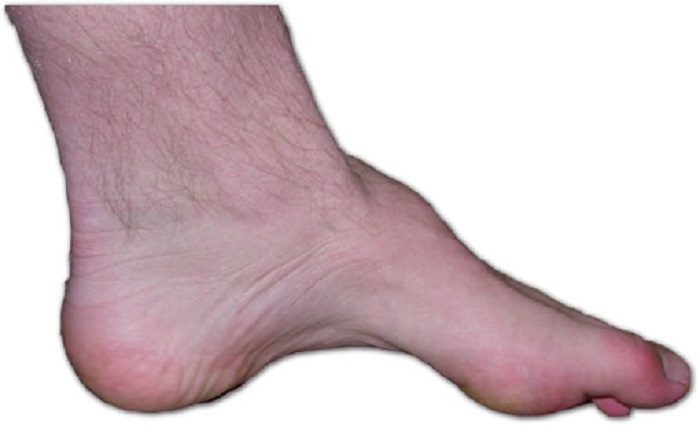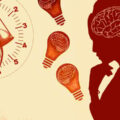It is very probable that a non-medical reader, coming across this title, would not be further interested. Charcot was a famous neurologist in France, Marie one of his students, and Tooth was an English neurologist. They were the first physicians to observe a disease pattern that reappeared from time to time in their experience. Because the cause was unknown, their names were used to document the disease in medical texts. This post is being written to describe its complex genetic mechanisms that are coupled with thiamine metabolism and the fact that it is the most common inherited neuromuscular disorder.
Symptoms of Charcot Marie Tooth Disease
Symptoms commonly begin in childhood or early adulthood, although they may appear much later. Muscle degeneration in hands and legs appears together with a burning sensation in feet and hands. There is decreased sensation in the feet and hands and an awkward gait that is observed in the patient. Abnormal curvature of the spine, known as scoliosis appears and there is increased clumsiness and tripping.
Prevalence data from the general population is lacking. At present 47 hereditary neuropathy genes are known to be involved and it has been estimated that 30-50 genes are yet to be identified. However, in 2018, it was shown that deficiency of a single gene (DHTKD1) in mice caused them to develop the symptoms of the disease.
DHTKD1 and Thiamine
Maintaining the functional integrity of mitochondria, the energy producing organelles in cells, is crucial for cell function. Mitochondrial dysfunctions may alter energy metabolism and in many cases are associated with neurological disease. Although the function of DHTKD1 in the mitochondria remains unknown, it has been reported that there is a strong correlation with ATP production, the currency of energy metabolism. Genetically determined suppression of DHTKD1 leads to Impaired mitochondrial biogenesis and increased reactive oxygen species. In simple language, energy production is impaired.
What interested me was that the structure of the DHTKD1 gene is reported to be associated with thiamine. Mutations have been associated with certain metabolites in urine (2-amino adipic and 2- oxoadipic acids), Charcot Marie Tooth disease, and eosinophilic esophagitis (EoE). The pathophysiology of these two clinically distinct disorders remains elusive. It suggests that named diseases, each with its alleged distinctive laboratory studies, could all be the variable result of cellular energy deficit. It calls to mind the energy dependent General Adaptation Syndrome that gave rise to the conclusions of Hans Selye who described human diseases as “The Diseases of Adaptation”.
An experiment in rats investigated the long-term changes in brain metabolism after a single injection of 400mg/Kg thiamine. Protocols were established for discrimination of the activities of the two dehydrogenase complexes that constitute the enzymes derived from the DHTKD1 gene. The thiamine induced changes depended on brain-region-specific expression of the thiamine dependent dehydrogenases. In the cerebral cortex, the “thinking” part of the brain, both were relatively high and did not increase with thiamine administration. In the cerebellum, part of the automatic brain function, the original levels of both were relatively low and the activities of both were upregulated by the injection.
Energy Deficiency
The well-known effect of thiamine deficiency (TD) is the disease called beriberi. Because the brainstem, limbic system and cerebellum are peculiarly sensitive to thiamine deficiency, the autonomic nervous system becomes dysregulated, giving rise to symptoms of dysautonomia. Many case reports are to be found in the medical literature where a given disease has been found to be associated with dysautonomia, where the association observed is considered to be a mystery.
A case report of a single patient with eosinophilic esophagitis (EoE) was reported to have TD as the underlying cause of the associated dysautonomia. Since it is well known that sugar easily induces TD, the publication asks whether EoE is a sugar sensitive disease. Thiamine is a necessity for the metabolism of the vagus nerve, part of the autonomic nervous that is now known to control the mechanisms of inflammation, an essentially defense mechanism that occurs in many disease conditions.
Beriberi is variably polysymptomatic. None of the symptoms are exclusive to the disease. The reason seems to be adequately explained by the fact that it is the most obvious energy deficiency condition known. Potentially affecting every cell in the body, it would be expected to have its major effects in the most metabolically active tissues. It is well known that the brain, nervous system and heart are the organs that answer to that criterion. I have always been interested in seeing a written report of a neurological disease in which heart disease is seen as an unexpected complication. The observer usually believes that this represents the appearance of a second disease instead of looking for energy deficiency as the cause of both.
Protein Folding and Thiamine
Enzymes are proteins and are constructed from long chains of amino acids bound together, possibly by electro-magnetic attraction. When not in use, the chain has to be folded, presumably for storage. When required for use as an enzyme it has to be unfolded. The folding/unfolding details of these chains are exquisitely complex and repetitive but the mechanism remains unknown. Every polypeptide has the capacity to misfold and form a non-functional protein.
A normal protein called the prion protein exists in the body. Its functions are largely unknown. It is also the key molecule involved in the family of neurodegenerative disorders, also known as prion diseases. Several forms of disease result from an accumulation of a variably misfolded isoform of this protein. Of profound interest, it has been reported from animal studies that the prion protein binds thiamine, leading to the hypothesis that thiamine metabolism might supply the energy required for protein folding and unfolding.
Genetics Versus Epigenetics in Charcot Marie Tooth Disease
The relatively recent discovery that nutrients can have an effect on genes has led to the science of epigenetics. It seems to be apparent that, although genes can cause a disease on their own, many genetically determined mechanisms may be insufficient to cause a disease by themselves. Perhaps the symptoms of a well-established, genetically determined disease such as Charcot Marie Tooth disease might respond clinically and biochemically to an epigenetic trial of a nutrient associated with its structure and consequent function. The symptoms of Charcot Marie Tooth disease are those that could be expected from a deficiency of energy affecting the genetically determined associated cellular defects.
Parkinson’s, Alzheimer’s, Huntington’s diseases and prion disease, as well as a variety of other disorders, are regarded as examples of an anomalous aggregation of proteins and all associated with thiamine. Also, Costantini and his group have shown that Parkinson’s disease responds clinically to high dose thiamine. This group had already reported that high dose thiamine had relieved the fatigue associated with ulcerative colitis and Crohn ‘s disease, implicating that energy deficiency was the cause of fatigue. The question arising from all of this – is energy deficiency the cause of disease, represented in a massive conglomerate of different manifestations ?
Conclusion
Charcot Marie Tooth is now an old-fashioned way of describing a disease, particularly because a single gene defect has been implicated to be responsible for this disease as well as EoE, two entirely different conditions. It is suggested here that the genetic changes lead to energy deficiency in the affected cells. Evidence is accumulating that Selye’s explanation of human diseases as the “diseases of adaptation” may be correct. Perhaps it may lead to general acceptance of Orthomolecular Medicine as proposed by the late Linus Pauling.
We Need Your Help
More people than ever are reading Hormones Matter, a testament to the need for independent voices in health and medicine. We are not funded and accept limited advertising. Unlike many health sites, we don’t force you to purchase a subscription. We believe health information should be open to all. If you read Hormones Matter, like it, please help support it. Contribute now.
Yes, I would like to support Hormones Matter.
Benefros at English Wikipedia, CC BY-SA 3.0 <http://creativecommons.org/licenses/by-sa/3.0/>, via Wikimedia Commons.
This article was published originally on July 14, 2021.















